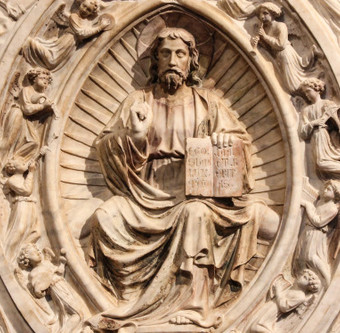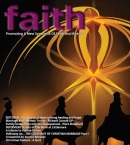
Book Review: What inspired the heroic young resisters to Nazism?
Article:
01.11.18
Conscience before conformity: Hans and Sophie Scholl and the White Rose resistance in Nazi Germany by Paul Shrimpton, Gracewing, 328pp, £15.99.
reviewed by Alexandra Lloyd
On 18 February 1943 three students at the University of Munich were convicted of high treason and executed by guillotine. Hans Scholl (25), Sophie Scholl (21) and Christoph Probst (24) had been members of the White Rose resistance group which between 1942 and 1943 produced and distributed leaflets calling for resistance to Nazism and an end to the Second World War. A further series of trials followed as other members of the group were rounded up. The final White Rose leaflet was smuggled out of Germany and intercepted by Allied forces, with the result that, in the autumn of 1943, millions of copies were dropped over Germany by Allied aircraft. The sacrifice of these young people, a story which is well known in Germany if not in the UK, is remarkable. Even more extraordinary is that Hans and Sophie had been enthusiastic members of the Hitler Youth, indeed defying their anti-fascist father by doing so.
The influence of Catholic thinkers
What, then, motivated these young people, who had been indoctrinated by the National Socialist state, to stand up courageously to the monolith of Nazism? This is the question Paul Shrimpton’s latest book seeks to answer, by focusing on an aspect of Hans and Sophie Scholl’s lives which English-language studies of the White Rose have tended to downplay: the extent to which their religious conviction drove their actions. Shrimpton persuasively argues that these young people possessed a profound awareness and understanding of conscience, which had been informed by their voracious reading of Christian writings, among them those of Blessed John Henry Newman. The influence of Catholicism on the Protestant Scholls has tended to be downplayed; Shrimpton’s book succeeds in showing how they were shaped by their engagement with Catholic writers and thinkers. These young individuals were not simply cultural Christians but had active prayer lives and a deep love of God and their fellow men. Shrimpton challenges historians who have dismissed aspects of Sophie’s spiritual confusions and confessional writing, seeing in them something of the mystic’s introspective search for God. By retelling the story of the Scholls through the lens of their faith, Shrimpton makes an original and invaluable contribution to the significant body of writing and research on the White Rose and its legacy in English.
Newman translated into German
The author’s analysis is based primarily on Hans and Sophie Scholl’s letters and diaries, as well as retrospective accounts by friends and relatives, and official transcripts of the Gestapo and trial reports. Shrimpton has worked from sources published in English translation, a fact that speaks to the international resonance these events have found, as well as the spirit of exchange between English and German on which the book touches. Indeed, the first chapter begins not with the Scholls, but with Theodor Haecker (1879-1945), a writer, cultural critic, and translator, who inNovember 1920 wrote to the Birmingham Oratory asking for permission to translate Newman’s An Essay in Aid of a Grammar of Assent into German. Between 1920 and 1945 Haecker translated seven works by Newman, including selected sermons and The Dream of Gerontius. Since he had been under a public speaking and writing ban since 1935, translation provided a means of resistance to the regime. Haecker would go on to exert a profound influence on the Scholls, and introduce them to Newman’s works.
‘The courage to speak’
Shrimpton then charts the lives of the Scholl siblings from early childhood, through the early years of the war, to the efforts of the resistance group and their subsequent arrest and execution. He interweaves the private and political, deftly balancing evidence of the Scholls’ interior lives and developing awareness of philosophy and ethics, with historical events of the period. For example, he sets out the relationship between Nazism and the Catholic and Protestant churches in the Third Reich, focussing on the three controversial sermons of Count Clemens August von Galen, Catholic bishop of Münster, who struck out against the hegemony of Nazism, and in particular its pursuit of a policy of euthanasia for individuals deemed ‘unworthy of life’. The sermons were widely circulated illegally and the Scholls received a copy, which Hans read, declaring ‘finally someone has the courage to speak’.
Newman ‘like drops of precious wine’
Shrimpton paints a vivid picture of the other core members of the White Rose, students Willi Graf and Alexander Schmorrell, and the philosophy professor Kurt Huber, as well as many other significant individuals: those who influenced the Scholls, such as the graphic designer Otl Aicher and the publisher Carl Muth, and their persecutors including the Gestapo official, Robert Mohr, who interrogated Sophie, and the infamous judge at their trial, Roland Freisler, who had been present at the Wannsee Conference to discuss the so-called ‘Final Solution to the Jewish Question’. An important figure is Sophie’s fiancé Fritz Hartnagel, whom she met at a dance in 1937. Under Sophie’s influence this career soldier transformed into a critic of the regime. When he left for the Eastern Front in May 1942, Sophie gave him two volumes of Newman’s sermons as a farewell present. He wrote to tell her that Newman’s words were like ‘drops of precious wine’.
The final chapter, on the Scholls’ legacy, is particularly compelling; especially Shrimpton’s reflection on what the Scholls might have to teach contemporary readers, and addresses criticism that Hans and Sophie were ‘impractical idealists’ who made little difference, endangering the lives of others as they did so. The questions are sensitively handled and well-integrated into the book’s wider narrative.
Freedom of conscience
Sophie Scholl was taken to the court from her cell on the morning of Monday 22 February 1943. Her cell mate, Else Gebel, noted that she had left behind the court’s indictment on which she had written a single word: ‘Freiheit!’ — ‘Freedom!’ Sophie was executed that same day at 5pm. Minutes later, it was her brother’s turn. As he was led to the guillotine Hans Scholl cried out ‘Es lebe die Freiheit!’ — ‘Long Live Freedom!’ The freedom for which the Scholls and their circle were fighting was of course freedom from the yoke of Nazism, but more than that, it was freedom for, the freedom of the individual to conform their will to the will of God, what Newman called ‘freedom of conscience’.
The story of the White Rose is a moving one, perhaps especially for those of us who work closely with young people. One has the impression that the author, himself a teacher, has developed a deep fondness and admiration for the young subjects of his book. Yet he does not idolize them; he allows them to speak and frames their story elegantly, straightforwardly, and often movingly. This book ought to be widely read. It has much to teach us about faith, courage, and conviction.
Notes:
Dr Alexandra Lloyd is Lecturer in German at St Edmund Hall and Magdalen College, Oxford. Her main research interests lie in twentieth-century literature and film, particularly cultural memories of childhood, war, and dictatorship.





